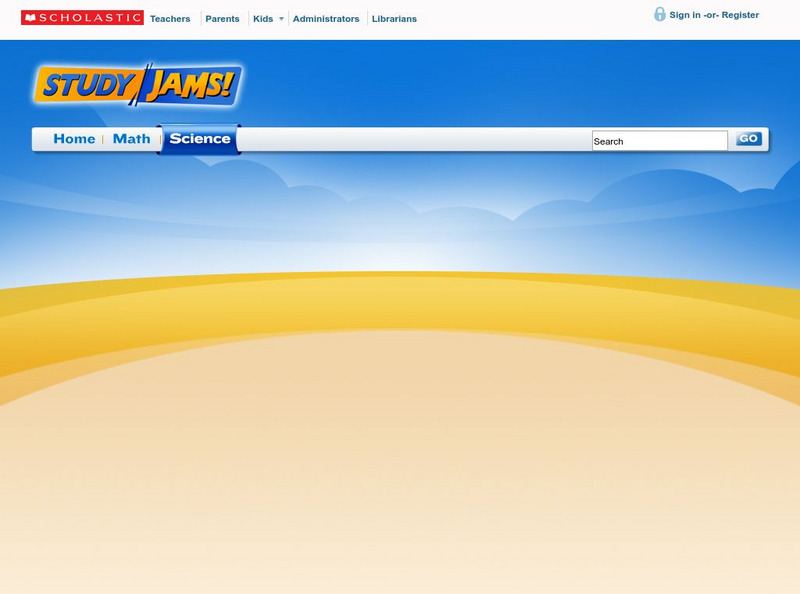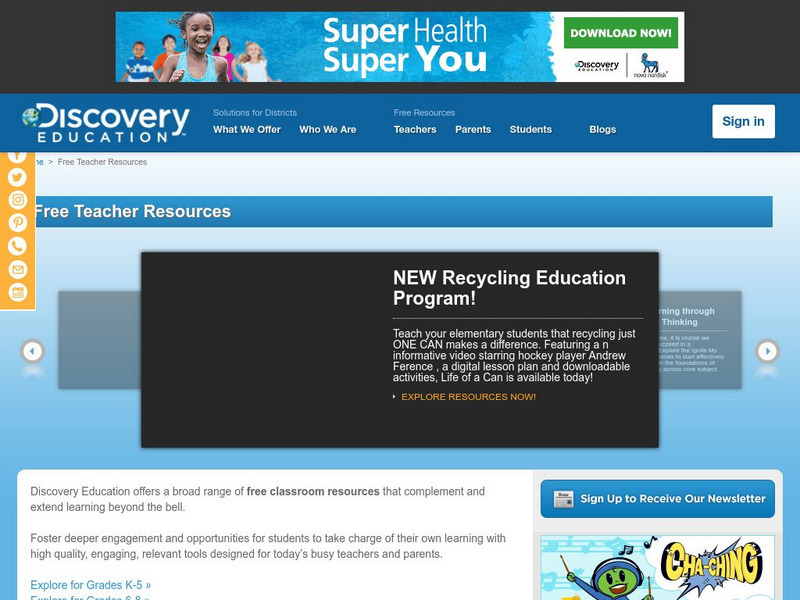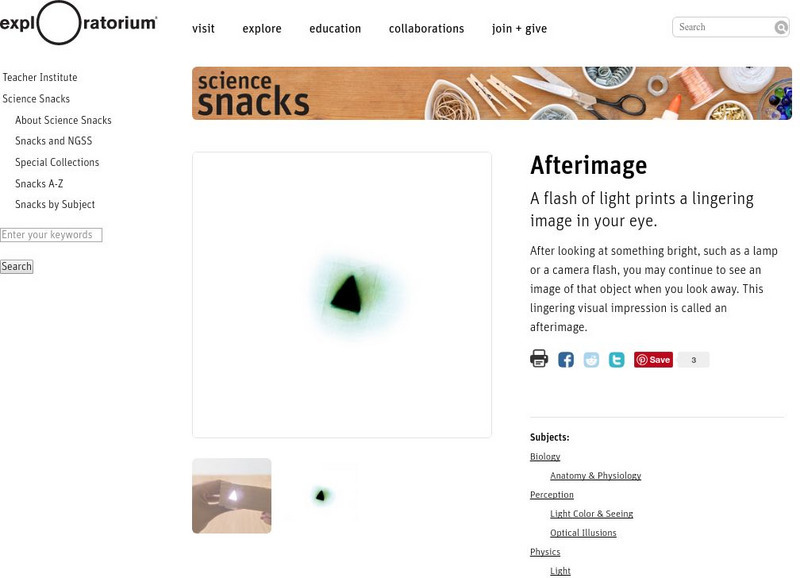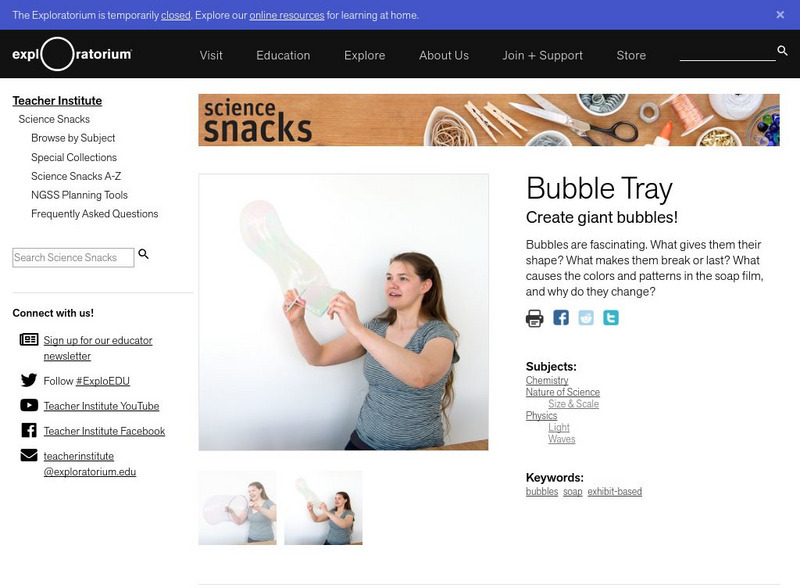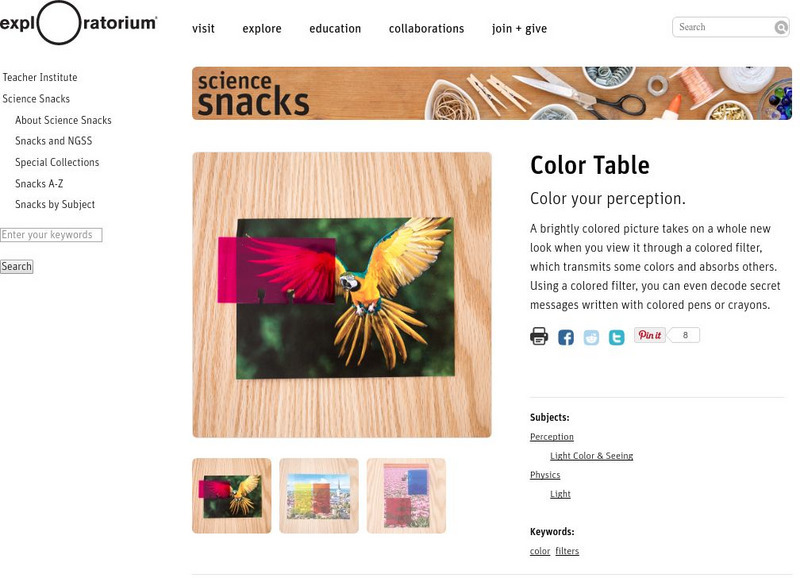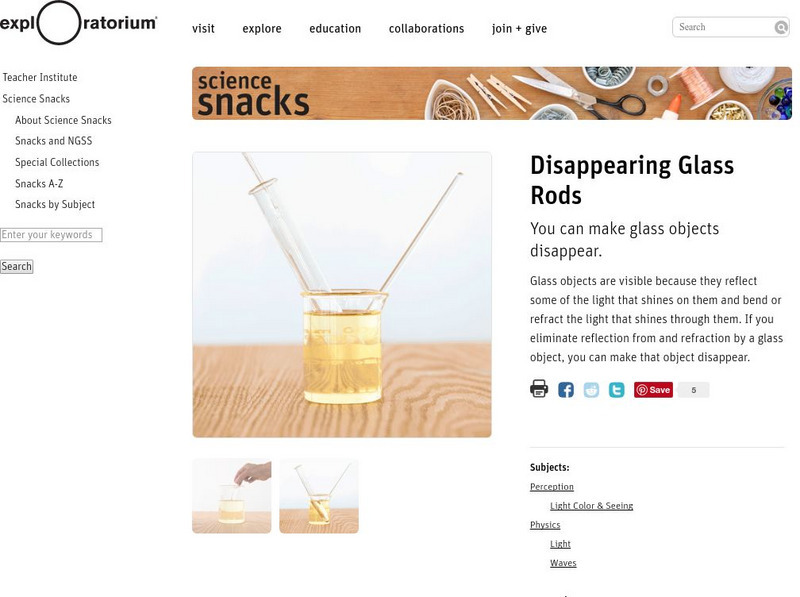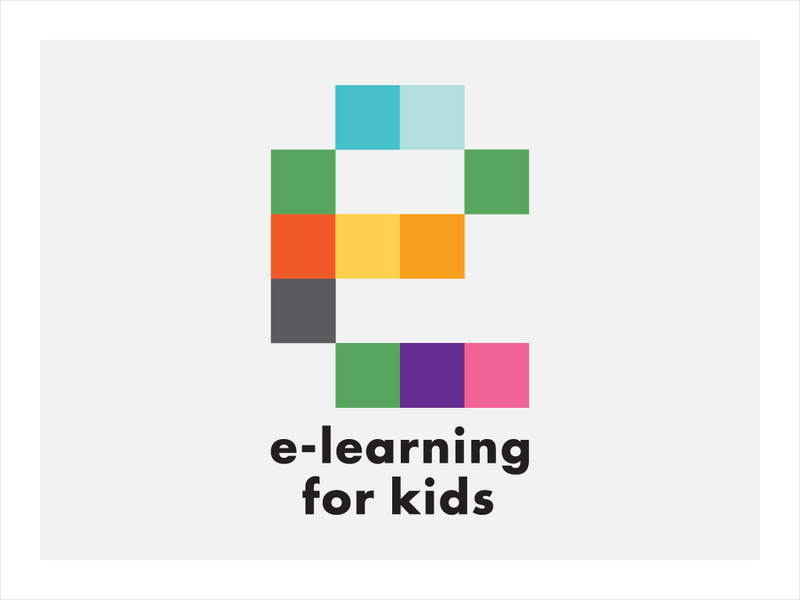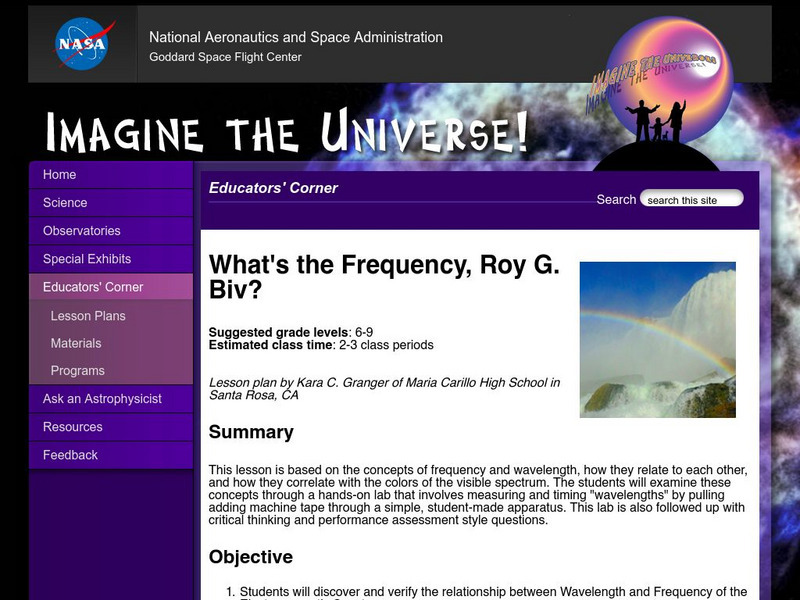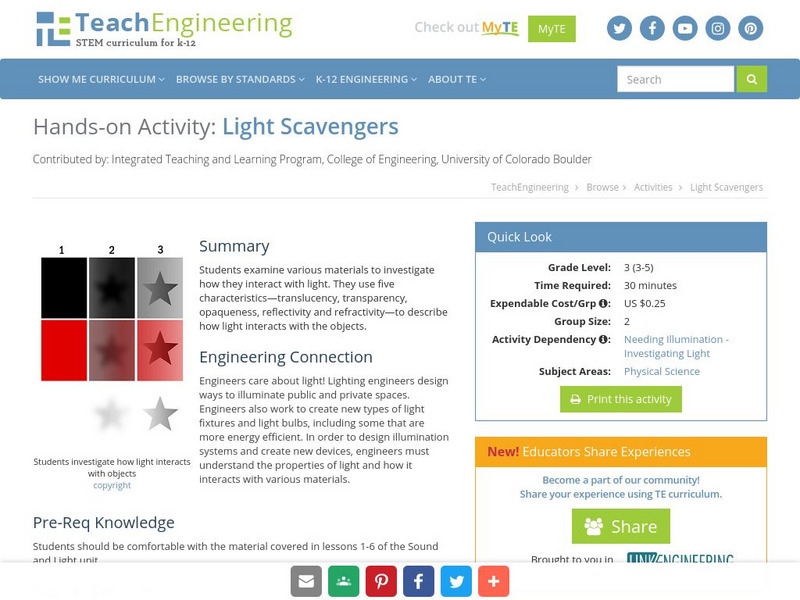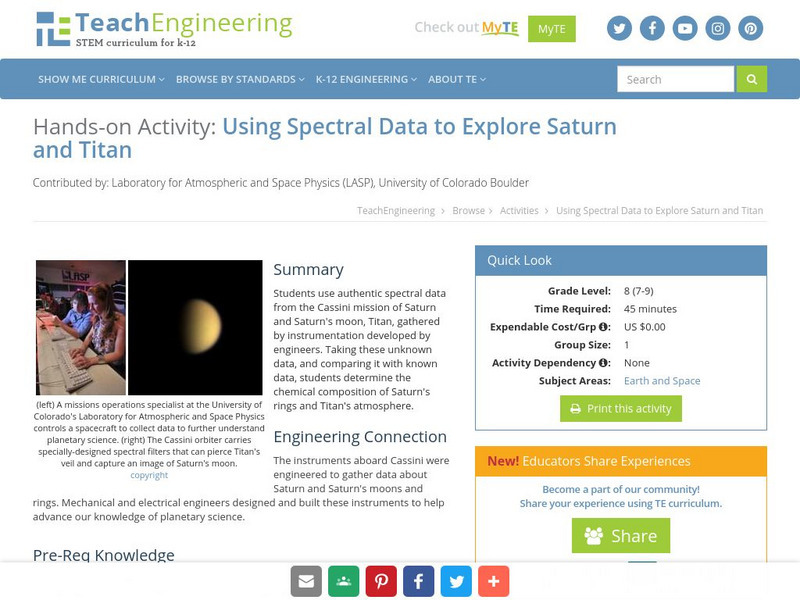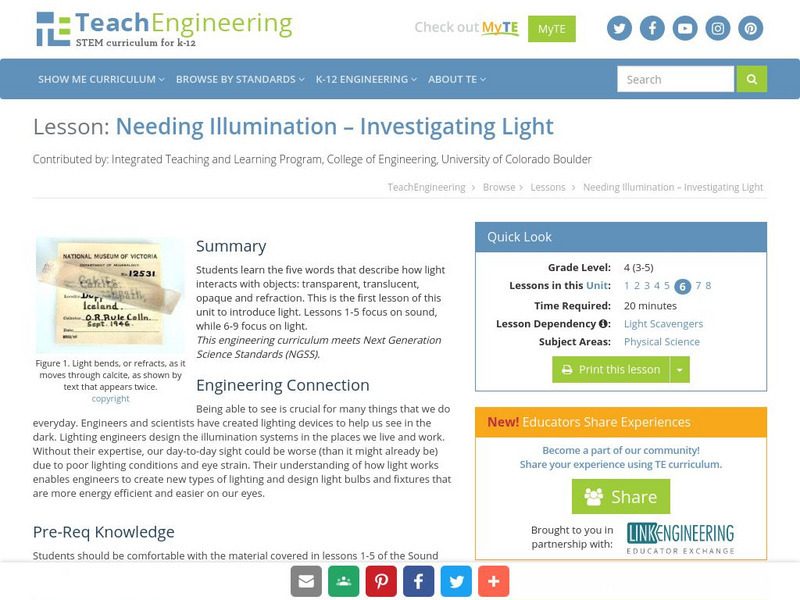Center of Science and Industry
Cosi Columbus: Two Lenses in One
Investigate the behavior of a water filled vial, and discover why it acts like a magnifier. Includes full list of materials, procedures, and scientific explanation of what causes light rays to change direction.
Center of Science and Industry
Cosi Columbus: Coffee Filter Rainbows
Science experiment that demonstrates chromotography. Includes full list of materials, procedures, and scientific explanation of what happens with different colors when they are soaked with water.
Scholastic
Scholastic: Study Jams! Science: Light Absorption, Reflection, & Refraction
A video and a short quiz on the properties of light.
Scholastic
Scholastic: Study Jams! Science: Energy, Light and Sound: Light
A video and a short quiz on the basic concepts and vocabulary for understanding light energy.
My Science Site
Optics: Energy and Control [Pdf]
A very comprehensive unit including topics such as light and its source, visible sources of light, transparency of objects and much more. Also offers a resource list, blackline masters, and expectation list, expectation summary and a...
Smithsonian Institution
Smithsonian National Zoo: Zoogoer Magazine: Living Light
Alison Fromme's article in Zoogoer, "Living Light," examines the role of light and luminescence in the lives of animals with specific attention given to those creatures which are able to manifest their own bioluminescence.
Discovery Education
Discovery Education: Sight and Light
A two-day lesson plan for young scholars to learn about the anatomy of the eye and the nature of vision. Includes a variety of supplemental resources for teachers.
E-learning for Kids
E Learning for Kids: Science: Denmark: What Are Light and Darkness?
In this module, students learn about the different sources of light, what causes darkness, and about shadows.
Exploratorium
Exploratorium: Science Snacks: Afterimage
An activity that explains why you see an afterimage after looking at something bright like a camera flash or lamp. Understand that an afterimage is a lingering visual impression that happens as a result of the chemical changes in the...
Exploratorium
Exploratorium: Science Snacks: Bubble Tray
This activity allows students to create and observe giant bubbles.
Exploratorium
Exploratorium: Science Snacks: Color Table
Did you know that different-colored backgrounds cause colored objects to look different? In this investigation, students will experience this phenomenon.
Exploratorium
Exploratorium: Science Snacks: Colored Shadows
Learn about additive mixtures in this activity. Understand how your rods and cones work together to see color.
Exploratorium
Exploratorium: Science Snacks: Disappearing Glass Rods
In this activity, you will make a glass object disappear by eliminating the reflection from and the refraction by the glass object.
Exploratorium
Exploratorium: Science Snacks: Giant Lens
In this activity, students create an image that hangs in midair by using a lens.
Exploratorium
Exploratorium: Science Snacks: Inverse Square Law
Learn about how the intensity of light is governed by the inverse-square law with this activity. Activity has you experimenting to find that the intensity of light decreases as the inverse square of the distance.
E-learning for Kids
E Learning for Kids: North Sea: How Do We Measure the Intensity of Light?
Students learn in this lesson about light intensity and the units used to measure it, the reflection of light, and how the amount of light can be increased using more lightbulbs.
Other
Isaac Newton
A page at the Isaac Newton (1642-1727 CE) Institute for the Mathematical Sciences website. This page, the contents of which come from the Microsoft Encarta encyclopedia, describes the upbringing, the education, the scientific and...
NASA
Nasa: Imagine the Universe: What's the Frequency, Roy G. Biv
In this very detailed lesson plan from NASA, students investigate wavelength and frequency within the electromagnetic spectrum.
TeachEngineering
Teach Engineering: Light Scavengers
In this activity, students examine various materials and investigate how they interact with light. Students use five new vocabulary words (translucent, transparent, opaque, reflection and refraction) to describe how light interacts with...
TeachEngineering
Teach Engineering: Using Spectral Data to Explore Saturn and Titan
Students use authentic spectral data from the Cassini mission of Saturn and Saturn's moon, Titan, gathered by instrumentation developed by engineers. Taking these unknown data, and comparing it with known data, students determine the...
TeachEngineering
Teach Engineering: Needing Illumination: Investigating Light
This is the first lesson of this unit to introduce light. In this lesson, students learn the five words that describe how light interacts with objects: "transparent," "translucent," "opaque," "reflection" and "refraction."
TeachEngineering
Teach Engineering: Visible Light and the Electromagnetic Spectrum
In this instructional activity, the electromagnetic spectrum is explained and students learn that visible light makes up only a portion of this wide spectrum. Students also learn that engineers use electromagnetic waves for many...
NASA
Nasa: Space Place: What Is Infrared?
See images and read about examples of infrared rays, and learn how they behave in different conditions.
Optical Society
Optical Society of America: Optics for Kids: Exploring the Science of Light
A collection of information on the science of light and optics. Features a wide variety of resources: key events in history, reference materials, multimedia links, optical illusion activities, glossary of optics terms, and information on...




